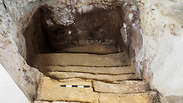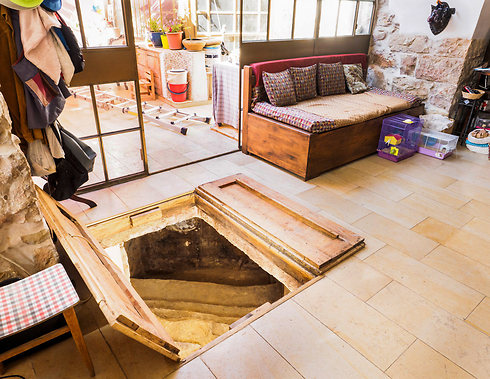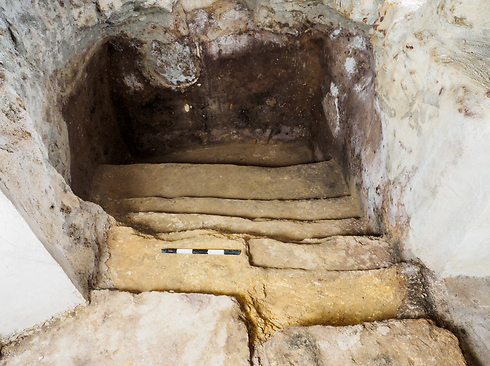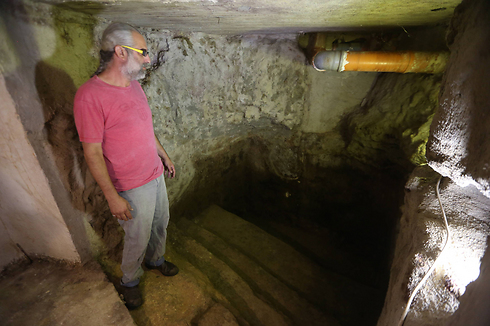
Second Temple-era ritual bath found under house
Couple from Ein Kerem in Jerusalem discovered during renovations that a 2,000-year-old mikveh was right underneath their floors, giving credence to theory that there was a Jewish settlement at the site.
Renovations in a Jerusalem home recently uncovered an ancient mikveh (ritual bath) dating from the Second Temple Period, believed to be over 2,000 years old.
The couple that lives in the home installed wooden doors leading to the mikveh and invited representatives of the Israel Antiquities Authority to document the discovery.
They were on Wednesday to receive a certificate of appreciation from the Authority for reporting the discovery.
The mikveh is considered relatively large, at 3.5 meters long, 2.4 meters wide and 1.8 meters deep. It is carved in stone and dug according the religious laws. Another staircase leads to the bottom of the immersion pool.
"Cases such as this, where antiquities are discovered under a private residence, can occur only in Israel, and particularly in Jerusalem," said Amit Ram, the Antiquity Authority's district archeologist in Jerusalem.

"Beyond the excitement and the unusual story of the mikveh's discovery, its exposure has archeological importance.
"Ein Kerem is considered a holy place in Christianity because of its association with the 'city of Judah', where the New Testament says John the Baptist was born and where Elizabeth, John's mother, met Mary, mother of Jesus.
"But archeological remnants in Ein Kerem and its environments are few and far between. The discovery of the mikveh bolsters the theory that in today's Ein Kerem there was a Jewish settlement in the Second Temple era."

Pottery from the Second Temple Period and signs of burning were found in the mikveh, which may indicate evidence for the Great Revolt of 66-70 CE. Pieces of stone tools common in the Second Temple Period were also found on the floor of the mikveh.
"At first we did not know for certain how important the discovery was and we hesitated to turn to the Antiquities Authority because we were concerned about the consequences," said the family.
"But we had a strong feeling that apparently there is a historically valuable discovery under the floor of our house, and our civic responsibility tipped the scales. We felt this finding deserved to be visible and well-documented.
"Fortunately, and to our surprise, we found worthy partners in this fascinating journey. The Antiquities Authority staff demonstrated great professionalism, practicality, and pleasantness. They were entirely concerned with preserving the discoveries and studying them."













